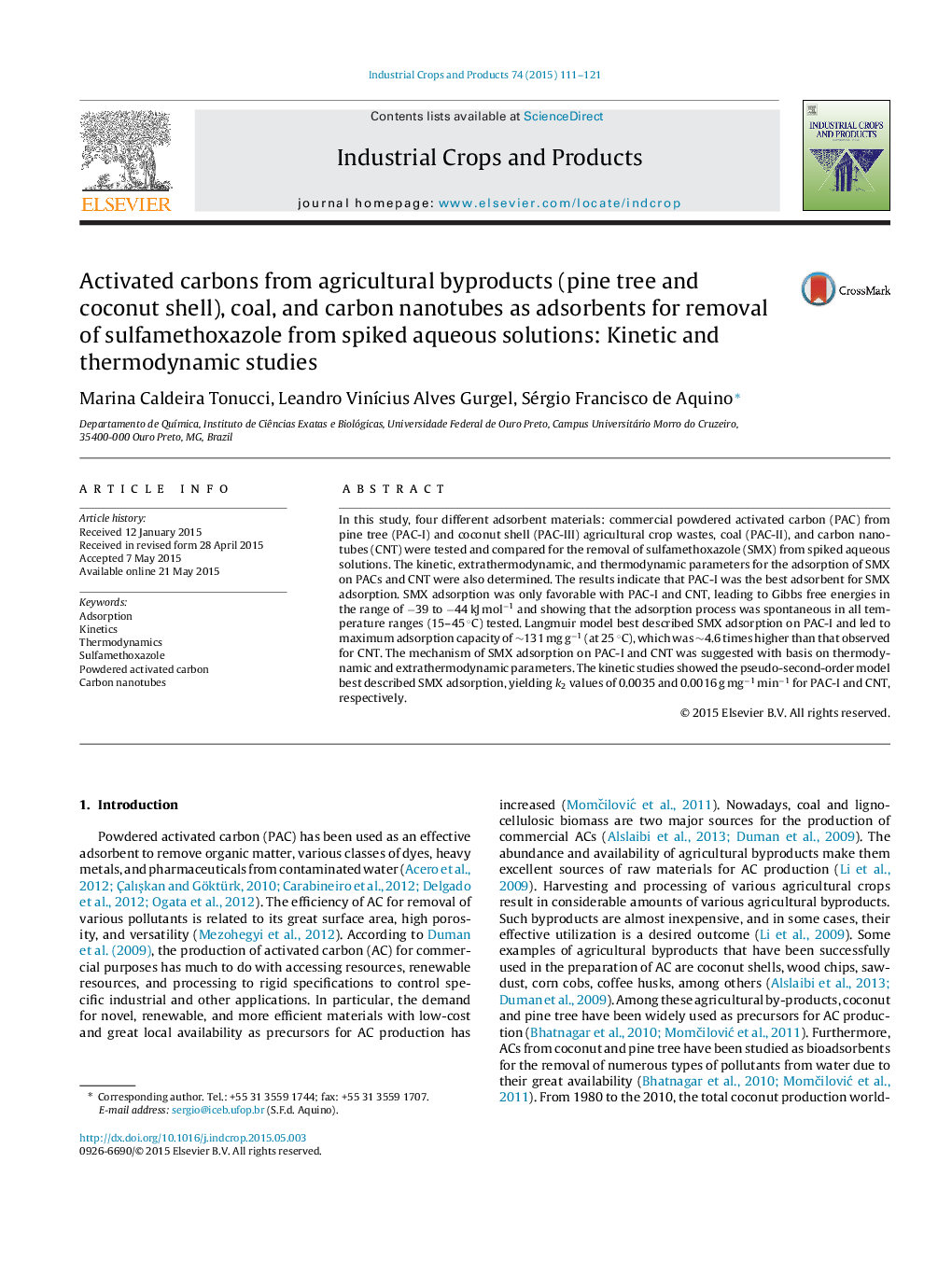| Article ID | Journal | Published Year | Pages | File Type |
|---|---|---|---|---|
| 6375877 | Industrial Crops and Products | 2015 | 11 Pages |
â¢SMX was adsorbed by powered activated carbon (PAC) and carbon nanotubes.â¢PACs used were from pine tree and coconut shell agricultural crop wastes and coal.â¢Sulfamethoxazole (SMX) adsorption followed Langmuir and pseudo-second-order models.â¢PAC-I adsorbent from pine tree showed a higher Qmax for SMX removal (131 mg gâ1).â¢PAC-I was suggested as the best adsorbent to be applied for SMX removal from water
In this study, four different adsorbent materials: commercial powdered activated carbon (PAC) from pine tree (PAC-I) and coconut shell (PAC-III) agricultural crop wastes, coal (PAC-II), and carbon nanotubes (CNT) were tested and compared for the removal of sulfamethoxazole (SMX) from spiked aqueous solutions. The kinetic, extrathermodynamic, and thermodynamic parameters for the adsorption of SMX on PACs and CNT were also determined. The results indicate that PAC-I was the best adsorbent for SMX adsorption. SMX adsorption was only favorable with PAC-I and CNT, leading to Gibbs free energies in the range of â39 to â44 kJ molâ1 and showing that the adsorption process was spontaneous in all temperature ranges (15-45 °C) tested. Langmuir model best described SMX adsorption on PAC-I and led to maximum adsorption capacity of â¼131 mg gâ1 (at 25 °C), which was â¼4.6 times higher than that observed for CNT. The mechanism of SMX adsorption on PAC-I and CNT was suggested with basis on thermodynamic and extrathermodynamic parameters. The kinetic studies showed the pseudo-second-order model best described SMX adsorption, yielding k2 values of 0.0035 and 0.0016 g mgâ1 minâ1 for PAC-I and CNT, respectively.
